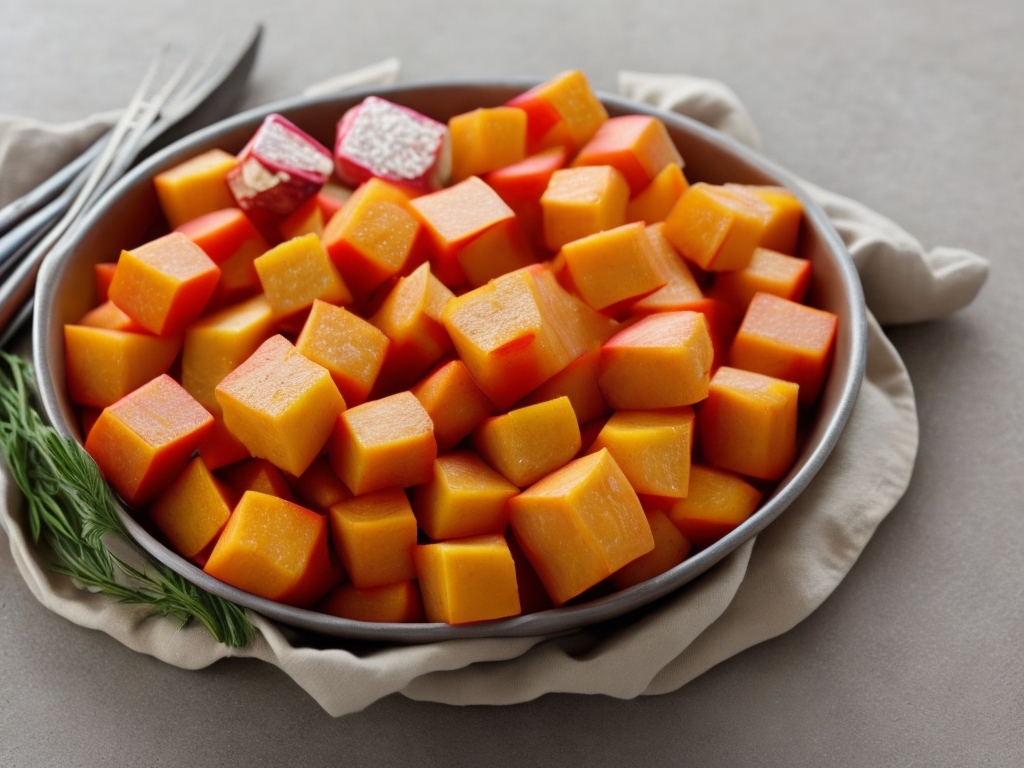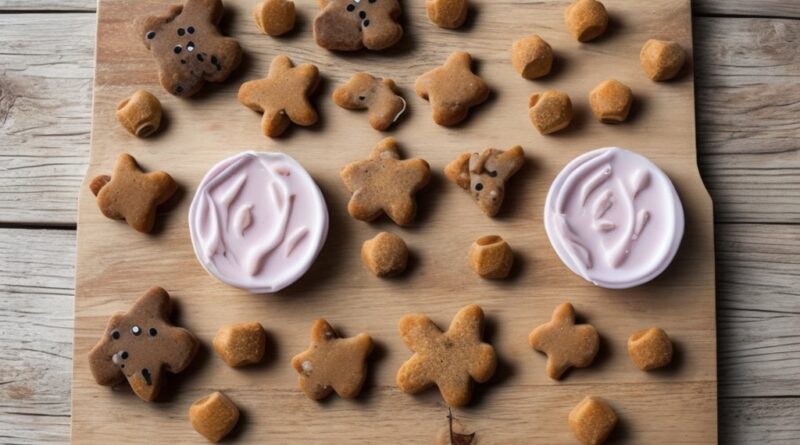From Your Kitchen to Their Bowl: Easy Homemade Dog Treats Recipes for Every Occasion!
Introduction to DIY Dog Treats
As a dog owner, you want to ensure that your furry friend is healthy and happy. One way to do this is by making your own dog treats. Homemade dog treats are not only healthier than store-bought ones, but they are also cost-effective and tailored to your dog’s dietary needs. Making your own dog treats can also be a fun and rewarding activity for you and your dog.
Benefits of Making Your Own Dog Treats
One of the main benefits of making your own dog treats is that you have control over the ingredients. Store-bought treats often contain harmful preservatives and additives, artificial colors and flavors, and high levels of sugar and salt. By making your own treats, you can avoid these ingredients and ensure that your dog is getting only the best.
Another benefit of making your own dog treats is that it is cost-effective. Store-bought treats can be expensive, especially if you have a large dog or if you give your dog treats frequently. Making your own treats can save you money in the long run.
Making your own dog treats also allows you to tailor them to your dog’s dietary needs. If your dog has allergies or sensitivities to certain ingredients, you can avoid those ingredients in your homemade treats. You can also make treats that are high in protein or low in fat, depending on your dog’s needs.
Finally, making your own dog treats can be a fun and rewarding activity for you and your dog. It allows you to spend quality time with your furry friend while also providing them with a tasty treat.
Ingredients to Avoid in Store-Bought Treats
When choosing store-bought treats, it is important to read the labels carefully. Some ingredients to avoid include harmful preservatives and additives, artificial colors and flavors, and high levels of sugar and salt.
Harmful preservatives and additives such as BHA, BHT, and ethoxyquin have been linked to cancer in dogs. Artificial colors and flavors can cause allergic reactions or behavioral problems in some dogs. High levels of sugar and salt can lead to obesity, diabetes, and other health problems.

Basic Ingredients for Homemade Dog Treats
When making homemade dog treats, there are several basic ingredients that you will need. Flour alternatives such as oat flour or coconut flour can be used instead of wheat flour for dogs with allergies or sensitivities. Protein sources such as chicken, beef, or fish can be used for a high-protein treat. Fruits and vegetables such as apples, carrots, or sweet potatoes can add flavor and nutrition to the treat. Healthy fats such as coconut oil or peanut butter can provide energy and promote a shiny coat.
Simple Treat Recipes for Training and Rewards
Peanut Butter and Banana Bites: Mash one ripe banana with 1/2 cup of peanut butter until smooth. Add 1 cup of oat flour and mix well. Roll into small balls and place on a baking sheet lined with parchment paper. Bake at 350°F for 10-12 minutes.
Chicken and Sweet Potato Jerky: Slice one sweet potato into thin rounds. Cut one chicken breast into thin strips. Place on a baking sheet lined with parchment paper. Bake at 200°F for 2-3 hours until crispy.
Salmon and Oatmeal Cookies: Mix 1 cup of cooked salmon with 1 cup of cooked oatmeal until well combined. Roll into small balls and place on a baking sheet lined with parchment paper. Bake at 350°F for 10-12 minutes.
Healthy Treat Recipes for Dogs with Special Dietary Needs
Grain-Free Pumpkin and Carrot Biscuits: Mix 1 cup of canned pumpkin puree with 1/2 cup of grated carrots. Add 2 cups of almond flour and mix well. Roll out the dough on a floured surface and cut into shapes using cookie cutters. Place on a baking sheet lined with parchment paper. Bake at 350°F for 20-25 minutes.
Vegan Sweet Potato and Chickpea Balls: Mash one cooked sweet potato with one can of drained chickpeas until smooth. Add 1/2 cup of oat flour and mix well. Roll into small balls and place on a baking sheet lined with parchment paper. Bake at 350°F for 10-12 minutes.
Low-Fat Turkey and Cranberry Treats: Mix 1 cup of cooked ground turkey with 1/2 cup of dried cranberries until well combined. Add 1 cup of oat flour and mix well. Roll out the dough on a floured surface and cut into shapes using cookie cutters. Place on a baking sheet lined with parchment paper. Bake at 350°F for 20-25 minutes.
Festive Treat Recipes for Holidays and Celebrations
Christmas Tree-Shaped Turkey and Cranberry Biscuits: Mix 1 cup of cooked ground turkey with 1/2 cup of dried cranberries until well combined. Add 2 cups of rice flour and mix well. Roll out the dough on a floured surface and cut into Christmas tree shapes using cookie cutters. Place on a baking sheet lined with parchment paper. Bake at 350°F for 20-25 minutes.
Heart-Shaped Beet and Carrot Biscuits for Valentine’s Day: Mix 1/2 cup of grated beets with 1/2 cup of grated carrots until well combined. Add 2 cups of oat flour and mix well. Roll out the dough on a floured surface and cut into heart shapes using cookie cutters. Place on a baking sheet lined with parchment paper. Bake at 350°F for 20-25 minutes.
Pumpkin and Cinnamon Biscuits for Halloween: Mix 1 cup of canned pumpkin puree with 1 teaspoon of cinnamon until well combined. Add 2 cups of whole wheat flour and mix well. Roll out the dough on a floured surface and cut into Halloween shapes using cookie cutters (e.g., pumpkins, ghosts). Place on a baking sheet lined with parchment paper. Bake at 350°F for 20-25 minutes.
Frozen Dog Treat Recipes for Hot Summer Days
Frozen Yogurt and Blueberry Bites: Mix one container of plain Greek yogurt with one cup of fresh blueberries until well combined. Spoon into an ice cube tray or silicone mold (e.g., paw prints). Freeze overnight.
Watermelon and Mint Popsicles: Puree one cup of fresh watermelon chunks with one tablespoon of fresh mint leaves until smooth. Pour into popsicle molds (e.g., bone-shaped) or ice cube trays with sticks inserted in the center (e.g., rawhide sticks). Freeze overnight.
Frozen Chicken and Vegetable Broth Cubes: Boil one chicken breast in four cups of water until cooked through (about 20 minutes). Remove chicken from broth (reserve for another use) and add chopped vegetables (e.g., carrots, green beans). Simmer for another five minutes until vegetables are tender but still firm. Pour broth mixture into ice cube trays or silicone molds (e.g., fire hydrants). Freeze overnight.
Homemade Dental Treat Recipes for Fresh Breath and Clean Teeth
Carrot and Apple Dental Chews: Cut one carrot into thin rounds (or use baby carrots) along with one apple sliced thinly (remove seeds). Place on a baking sheet lined with parchment paper or silicone mat (e.g., paw print). Bake at 200°F for two hours until crispy.
Parsley and Mint Breath Fresheners: Mix one tablespoon each of dried parsley flakes, dried mint leaves, baking soda, coconut oil, honey, water until well combined (add more water if needed). Spoon mixture onto waxed paper or silicone mat (e.g., bone-shaped) in small mounds about the size of a dime (or use piping bag). Freeze overnight.
Coconut Oil and Cinnamon Toothpaste: Mix two tablespoons each of coconut oil (melted) along with two teaspoons each cinnamon powder, baking soda until well combined (add more coconut oil if needed). Spoon mixture onto waxed paper or silicone mat (e.g., toothbrush-shaped) in small mounds about the size of a dime (or use piping bag). Freeze overnight.
Tips for Storing And Serving Homemade Dog Treats
Proper storage is crucial to maintain the freshness and quality of homemade dog treats. After investing time and effort into baking these special treats for your furry friend, it would be a shame to see them go to waste. The first step is to ensure that the treats have cooled completely before storing them. Once cooled, it’s best to place them in an airtight container, such as a Tupperware or glass jar, to prevent moisture and air from affecting their texture and taste. For added protection, consider using a container with a sealable lid or airtight silicone bags. Additionally, storing them in a cool and dry place, away from direct sunlight and heat sources, will help extend their shelf life. Keep an eye on any signs of spoilage, such as mold or unusual odor, and discard any treats that show these signs. By following these storage guidelines, you can enjoy the satisfaction of knowing you’re providing your furry friend with fresh, homemade treats every time.
Portion control is essential when it comes to feeding homemade dog treats. While it may be tempting to shower our furry friends with an abundance of treats, overfeeding can lead to obesity and other health issues. Just like humans, dogs have specific dietary needs and require a balanced diet to maintain their overall well-being. When preparing homemade treats for your canine companion, it is crucial to pay attention to the recommended portion sizes. This will ensure that your dog receives the right amount of nutrition without consuming excessive calories. By practicing portion control, you can maintain your dog’s ideal weight, promote healthy digestion, and prevent any potential health complications. Remember, treats should be given as a supplement to their regular meals, not as a replacement. It is always best to consult with your veterinarian to determine the appropriate portion sizes based on your dog’s size, breed, and individual nutritional requirements.
Conclusion:
Making homemade dog treats has many benefits including control over ingredients used in store-bought products which may contain harmful preservatives/additives/artificial colors/flavors/high levels sugar/salt; cost-effectiveness; tailored dietary needs; fun/rewarding activity between owner/pet; festive recipes perfect for holidays/celebrations; frozen recipes great during hot summer days; dental recipes promoting fresh breath/clean teeth; tips on storing/serving DIY dog treats properly while incorporating them into daily routine keeping pets healthy/happy!

